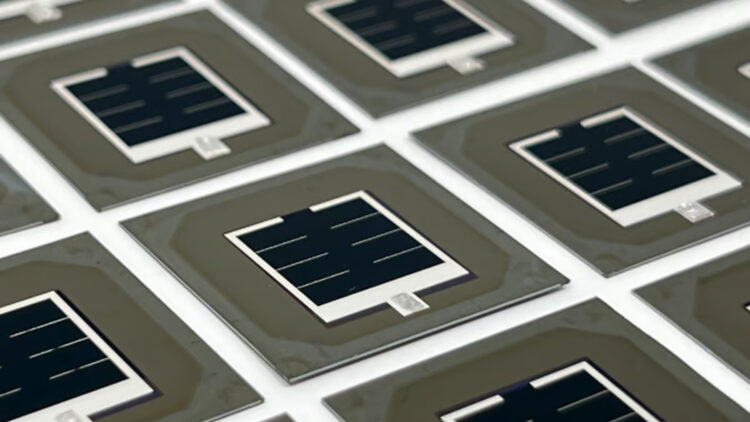It’s time to bid farewell to the days of stagnant solar cell efficiency and say hello to the era of perovskite-silicon solar cells! Groundbreaking research from Saudi and German scientists has culminated in the creation of blade-coated cells that boast a remarkable 31.2% efficiency. As you can imagine, this achievement marks a significant advancement in renewable energy innovation.
Perovskite-silicon cells: A new dawn in solar energy technology
Developed collaboratively by Saudi Arabia’s King Abdullah University of Science and Technology and Germany’s Helmholtz-Zentrum Berlin, this new type of solar cell is an ambitious game-changer of note. It consists of a durable, perovskite-silicon tandem composite that enhances charge extraction and interface passivation within the cell’s structure.
Stefaan De Wolf, lead author of the project, explains: “Perovskite-silicon tandems have convincingly proven their high-performance potential, with many groups now achieving efficiencies higher than 30%.
“However, translating these results from a lab-scale environment towards techniques that are relevant to the industry requires attention, especially for solution processing techniques. Here, we show certified efficiencies above 31% using blade-coated perovskites,” added De Wolf.
To optimize the performance and stability of this tandem cell, the team integrated two-dimensional (2D) perovskite layers at the bottom interface. They were then able to deposit three-dimensional (3D) layers atop the 2D perovskite layers organized in a p-i-n inverted configuration.
What goes into making these solar cells highly efficient?
To refine the cell’s efficiency, the team adjusted the dimensionality of the 2D perovskite film, which helped boost energy level alignment and substantially reduced performance losses in the p-i-n devices.
In turn, the leading perovskite device was able to achieve an impressive power conversion efficiency of 22.6%. It also recorded an open-circuit voltage of 1.23 volts and a fill factor of 82%.
The project resulted in a tandem device measuring 0.16 square inches built upon a substrate made from indium tin oxide. Several layers are also incorporated into the design, including amorphous silicon, a crystalline silicon absorber, and a transparent back contact made from indium zinc oxide.
Additionally, the device is coated with a layer of magnesium fluoride, which serves as an anti-reflector. To complete the look, silver metal contact was added as a final touch.
The test results are in, and these solar cells surpass all expectations
When the research team tested its performance over a period of 1,700 hours under standard sunlight exposure, the solar cell was able to maintain 80% of its initial efficiency.
The team reported: “Our overall strategy, which involved a robust perovskite composition and a bottom 2D interface, allowed us to achieve certification for blade-coated tandem cells for the first time in the literature, with an efficiency of 31.2% measured at the Fraunhofer Institute for Solar Energy Systems.”
For renewable energy, this marks a substantial breakthrough, paving the way for wider applications. Enhanced efficiency equates to lower costs and increased energy output, something which traditional solar panels have long sought to achieve. Indeed, the innovative design of these blade-coated solar cells demonstrates the potential of combining materials for high performance and greater power generation.
Furthermore, the team’s method of fabrication aligns well with scalable ink-based techniques, making it a strong candidate for large-scale manufacturing. For widespread adoption of this technology, industrial manufacturers will benefit greatly from its compatibility with current production processes.
The development of these perovskite-silicon tandem cells has the potential to transform the face of solar energy for the better. It will pave the way for more efficient systems that harness the Sun’s power effectively and sustainably. Above all, this advancement both showcases the strength of international collaboration and signals hope for a clean, green future.

